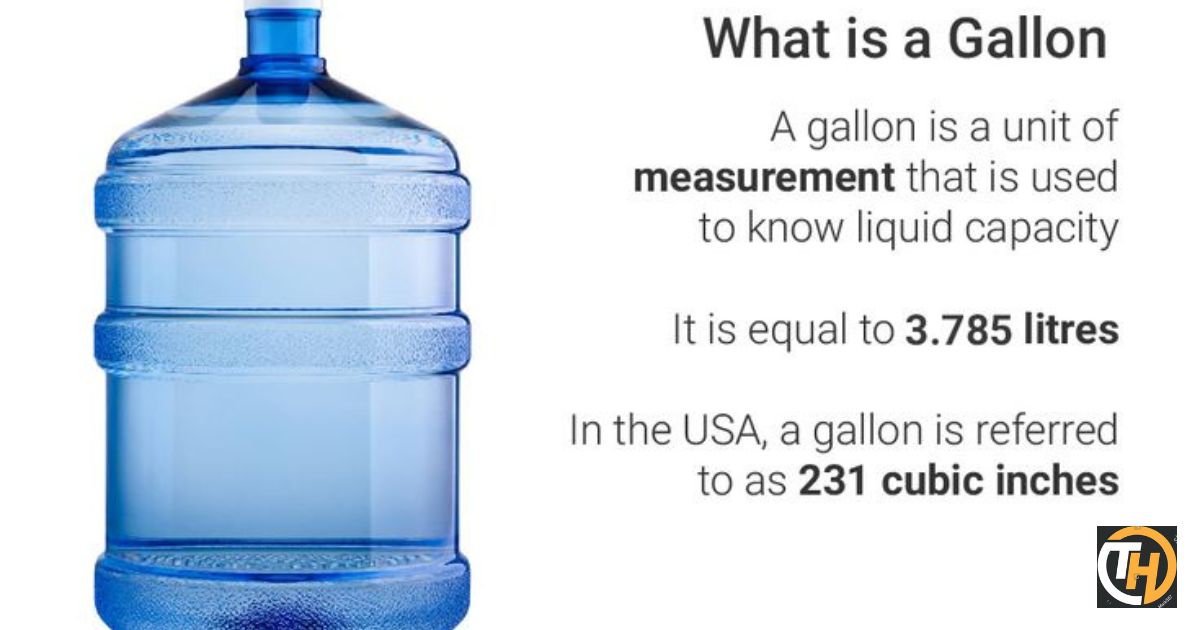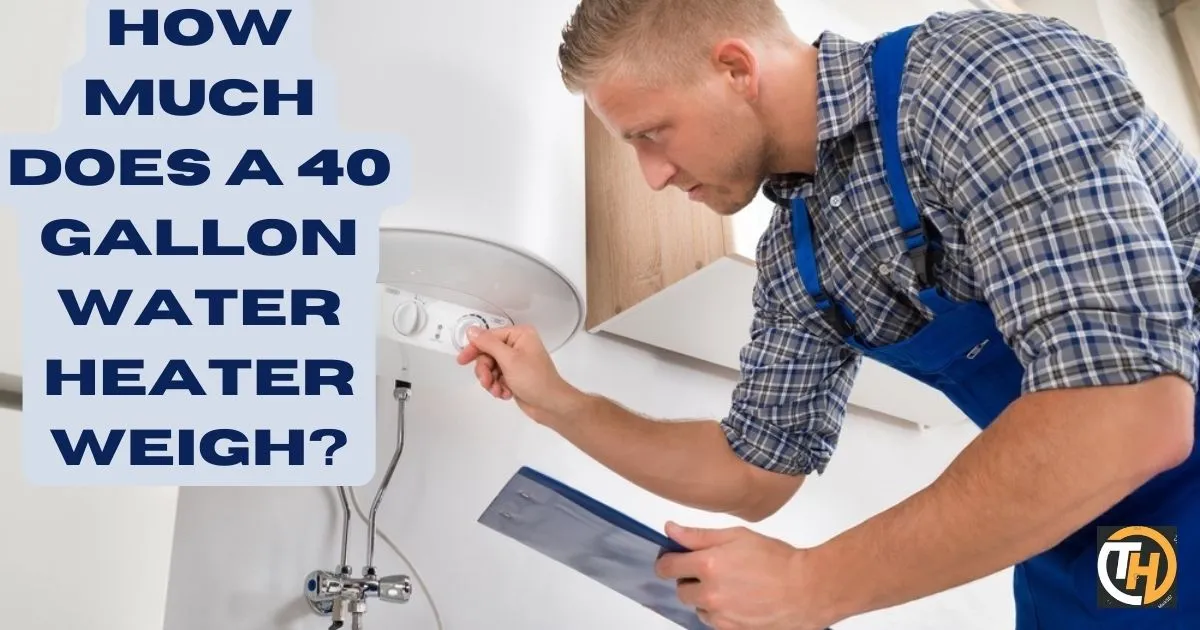A 40-gallon water heater is a common household appliance used to provide a steady supply of hot water for various domestic needs. From showering to dishwashing, these units play a crucial role in our daily lives. Here is a question how much does A 40 Gallon Water Heater Weigh? lets find the solution.
Have you ever wondered about the a 40-gallon water heater weigh? It’s a question that often arises during installation or replacement projects. Knowing the weight of your water heater is essential for various reasons, from ensuring proper support to safety considerations.
In this comprehensive article, we’ll delve into the world of 40-gallon water heaters and answer the pressing question: How much do they weigh? We’ll explore the importance of understanding their weight, the factors that influence it, and how this knowledge can impact your home or business. By the end, you’ll have all the information you need to make informed decisions regarding your water heater. Let’s get started.
A 40 Gallon Water Heater Weigh
Why Does Weight Matter?
The weight of a 40-gallon water heater is not just a number; it carries significant importance in various aspects of installation, safety, and structural integrity. Let’s delve into why it matters:
Installation Planning
Proper planning is key to the successful installation of a 40-gallon water heater. Consider the following factors to ensure a safe and efficient installation:
Location Selection:
Choose an appropriate location for the water heater. It should be close to the areas where hot water is frequently used to minimize heat loss through the pipes. Additionally, ensure that the space is well-ventilated and complies with local building codes.
Structural Assessment:
Before installation, assess the structural integrity of the floor or platform where the water heater will be placed. Confirm that it can support the weight of the unit when it’s full of water.
Space Clearance:
Provide sufficient space around the water heater for maintenance and servicing. Ensure at least 6 inches of clearance on all sides and 12 inches of clearance above the unit.
Seismic Considerations:
In regions prone to earthquakes, it’s crucial to follow seismic strapping guidelines provided by the manufacturer. This involves securing the water heater to wall studs to prevent movement during seismic events.
Gas and Water Connections:
If you’re using a gas water heater, ensure that the gas supply line and water connections are in good condition. Replace any worn or damaged parts to prevent leaks.
Electrical Requirements:
For electric water heaters, ensure that the electrical circuit meets the voltage and amperage requirements. If it doesn’t, you may need to upgrade the electrical system.
Ventilation:
Verify that the ventilation system complies with local codes. Adequate ventilation prevents the accumulation of flammable gases and ensures safe operation.
Access for Service:
Position the water heater so that there is easy access for servicing and maintenance. This includes access to the thermostat, pressure relief valve, and drain valve.
Permit and Code Compliance:
Check with your local building department to determine if you need a permit for the installation. Comply with all local building codes to ensure a safe and legal installation.
Professional Installation:
While some homeowners may choose to install water heaters themselves, it’s often advisable to hire a professional plumber or HVAC technician. They have the expertise to ensure proper installation, adherence to safety guidelines, and compliance with local codes.
Safety Precautions:
Follow safety precautions during installation, such as shutting off the power and gas supply before making connections. Have a fire extinguisher on hand and be prepared for any emergencies.
Test and Inspect
After installation, thoroughly test the water heater and check for leaks. Ensure it’s functioning correctly before putting it into regular use.
A 40 Gallon Water Heater Weigh
Proper planning and careful consideration of these factors, including the weight of a 40-gallon water heater, will contribute to the safe and efficient installation of your water heater. By following these guidelines, you can enjoy reliable hot water and peace of mind knowing that your installation meets all safety and structural requirements.
Structural Integrity
The structural integrity of a 40-gallon water heater is paramount for its safe and efficient operation. Let’s explore some key considerations:
Floor Support:
Before installation, it’s essential to ensure that the floor or platform where the water heater will be placed can adequately support its weight. A 40-gallon water heater, when full, can be quite heavy. Weak or uneven flooring can result in instability and potential damage.
Anchoring and Bracing:
To maintain structural integrity, the water heater should be correctly anchored or braced as per the manufacturer’s instructions. This is particularly important in areas prone to seismic activity, where securing the unit can prevent it from toppling during an earthquake.
Seismic Strapping:
In regions with a higher risk of earthquakes, seismic strapping is an additional safety measure. These metal straps or brackets should be used to secure the water heater to wall studs to prevent it from moving during seismic events.
Leaks and Corrosion:
Regular inspections are crucial to identify any leaks or signs of corrosion. Leaking water can weaken the floor and surrounding structures over time. Corrosion can also compromise the tank’s structural integrity.
Proper Ventilation:
Inadequate ventilation can affect both the water heater’s performance and structural integrity. Ensure the venting system is correctly installed and complies with local building codes. Proper ventilation helps prevent the accumulation of flammable gases and excessive heat.
Weight Distribution:
Evenly distribute the weight of the water heater on the support structure. Placing excessive weight on a single area can lead to structural damage over time.
Secure Conections:
All connections, whether for water supply, gas, or electrical, should be securely fastened. Loose connections can result in leaks or damage to the water heater and its surroundings.
Code Compliance:
Compliance with local building codes is essential to maintain structural integrity. Building codes are designed to ensure that installations are safe and meet structural standards.
Installation by Professionals:
For a new installation or replacement, it is advisable to seek professional installation services. Certified plumbers or HVAC technicians are experienced in ensuring the structural integrity and safety of water heaters.
Maintaining the structural integrity of your 40-gallon water heater is not only crucial for its safe operation but also for preventing potential structural damage to your home. Regular inspections and adherence to safety guidelines can help maintain the longevity of your water heater and the safety of your living space.
Safety Precautions
Proper Handling
When moving a water heater, especially one as substantial as a 40-gallon unit, it’s crucial to use proper lifting techniques and enlist the help of others if needed. Attempting to move it on your own can lead to physical strain and injury.
Clear Pathways
Ensure the pathways to and from the installation site are clear of obstacles and debris. A clear pathway prevents tripping and ensures a smooth transition of the heavy water heater.
Adequate Support
Before installation, verify that the floor or platform where the water heater will be placed is strong and level. The support structure should be capable of bearing the weight of the heater, the water it will contain, and any additional fixtures.
Secure Installation
When securing the water heater in place, follow the manufacturer’s instructions meticulously. The unit should be anchored securely to prevent tipping or movement.
Ventilation

Proper ventilation is essential to prevent the accumulation of flammable gases. Make sure the water heater’s venting system complies with local building codes. Improper venting can pose serious safety risks.
Gas Connections
If you have a gas water heater, gas connections should be checked for leaks and tightened adequately. Leaking gas can be extremely hazardous.
Electrical Wiring
For electric water heaters, ensure the electrical wiring is correctly installed. Faulty wiring can result in electrical fires or damage to the unit.
Relief Valve
Check the pressure relief valve for proper functioning. This valve is crucial for maintaining safe pressure levels within the tank. It should operate smoothly and release water when necessary.
Regular Inspections
Once installed, conduct regular inspections of your water heater. Look for signs of corrosion, leaks, or unusual noises. Address any issues promptly to maintain the unit’s safety and longevity.
By adhering to these safety precautions, you can ensure the safe installation and operation of your 40-gallon water heater, minimizing potential risks and promoting a secure environment in your home.
Factors Influencing Weight
Type
A 40-gallon water heater typically falls into the category of traditional tank-style heaters. The weight of the tank, especially when it’s full, significantly contributes to the overall heft of the water heater. Water heaters come in different types, but the most common are traditional tank-style heaters and tankless heaters. Traditional tank-style heaters tend to be heavier due to the water they store.
Material
The material used in the construction of the water heater can also impact its weight. Water heaters are typically made of steel or other heavy-duty materials. These robust materials are used to ensure the longevity and durability of the unit. However, they also add to the overall weight.
Capacity
In the context of a 40-gallon water heater, the 40-gallon tank refers to the storage capacity of the tank. The more water a tank can hold, the heavier it will be. Larger capacity water heaters will naturally be heavier due to the increased volume of water they can contain. This directly impacts the overall weight of the water heater.

Understanding these factors that influence the weight of a 40-gallon water heater, such as whether you can lay a water heater on its side, is essential when planning for its installation and ensuring that the supporting structure can handle the load. Additionally, it aids in making the right safety considerations during the installation or replacement process.
| Heading | Bullet Points |
| Factors Influencing Weight | Water volume when full – Material and construction of the heater – Accessories added (e.g., insulation, temperature and pressure relief valves) |
| Safety Precautions | Ensure a stable, level installation surface – Verify weight limits specified in local building codes – Use appropriate support structures |
| Structural Integrity | Preventing floor or platform damage – Avoiding accidents and injuries – Compliance with building codes – Extending the heater’s operational life |
| Installation Planning | Selecting a suitable location – Confirming structural integrity – Properly anchoring the heater – Following manufacturer recommendations |
| Why Does Weight Matter? | Maintaining home safety – Complying with local building codes – Longevity of the water heater – Preventing leaks and damage |
FAQs
FAQ: What can happen if a water heater exceeds its weight limit?
Answer: Exceeding the weight limit can damage the floor or platform, potentially causing safety hazards.
FAQ: Is it essential to follow local building codes for water heater installations?
Answer: Yes, adhering to building codes ensures safety and compliance with regulations.
FAQ: How can I extend the operational life of my water heater?
Answer: Proper installation and maintenance can help prolong the life of your water heater, reducing the risk of issues.
Conclusion
In summary, comprehending the weight of a 40-gallon water heater is a fundamental aspect that should not be underestimated. It plays a pivotal role in ensuring the seamless and secure installation of this essential home appliance, whether you’re a seasoned professional or a homeowner embarking on a DIY project.
In essence, the weight of a 40-gallon water heater is an indispensable detail that should not be overlooked. The weight of a water heater not only ensures that your hot water needs are met with the utmost reliability and safety but also plays a significant role in enhancing your overall quality of life. Understanding the weight of your water heater is essential for proper installation, maintenance, and safety. So, how heavy is a 40-gallon water heater? Let’s explore the weight and its implications.











